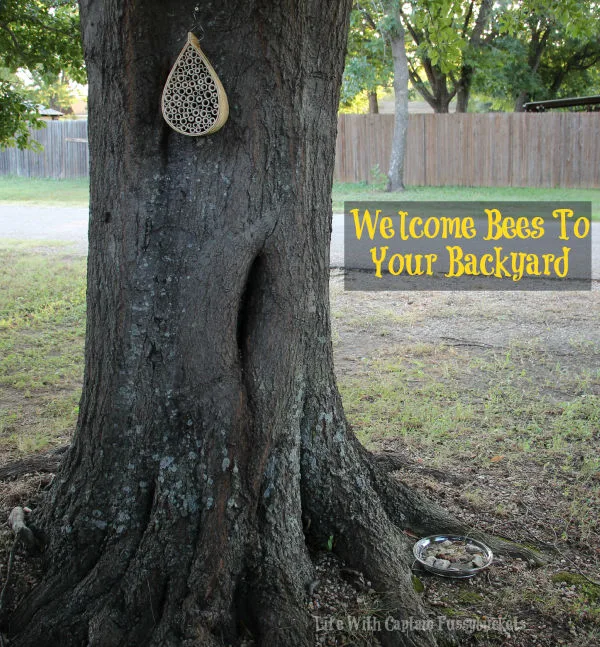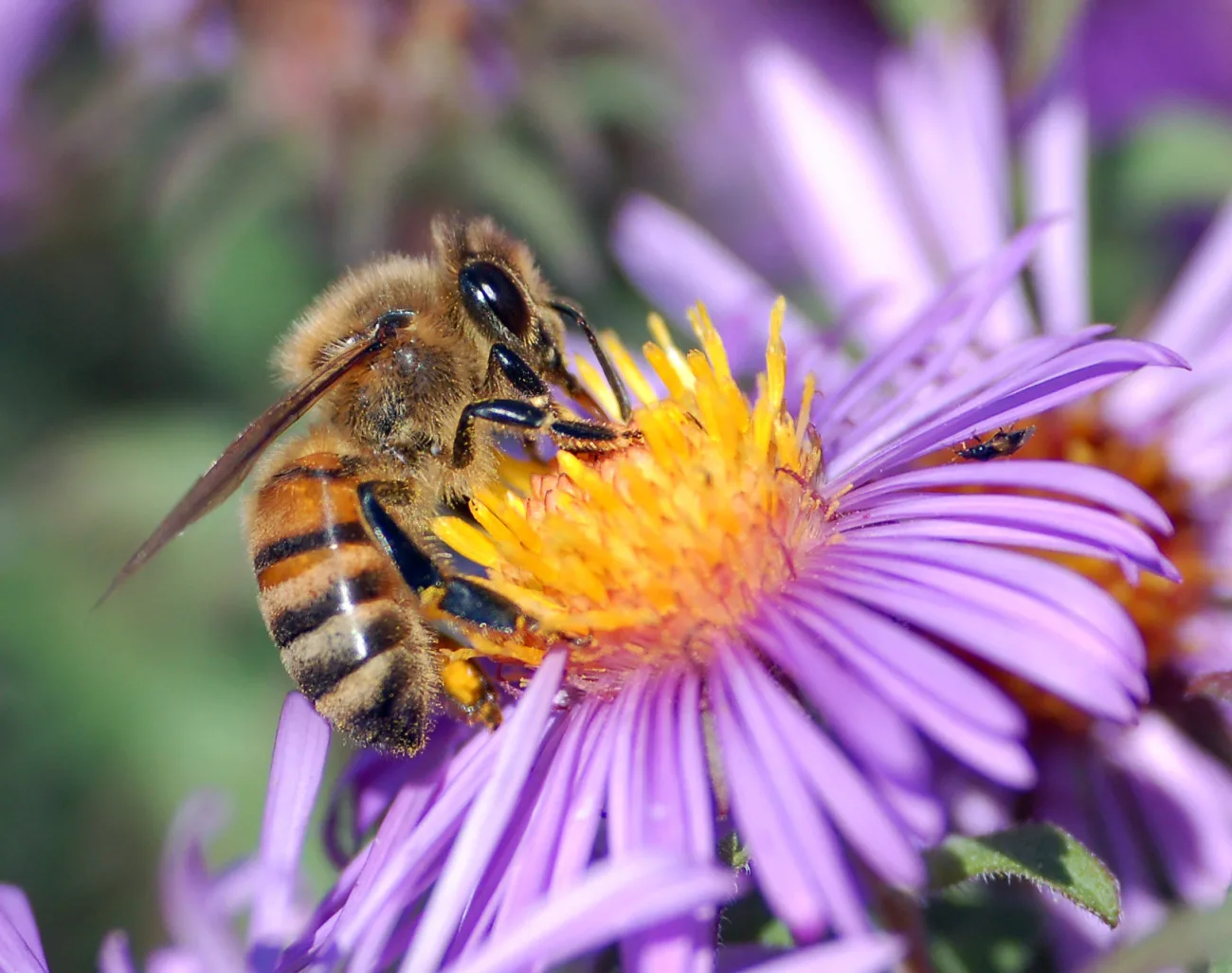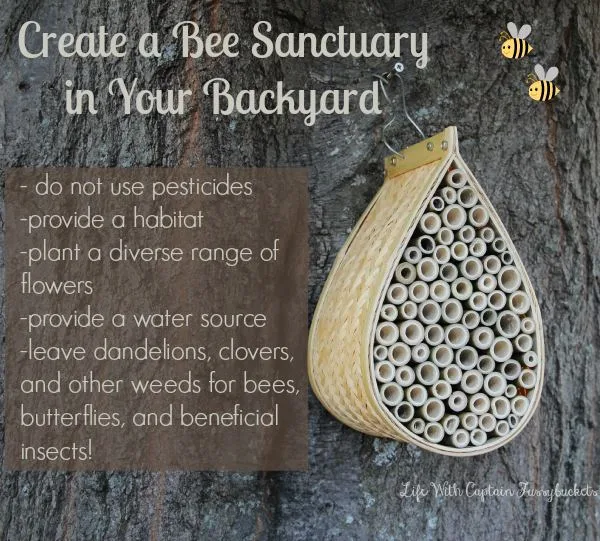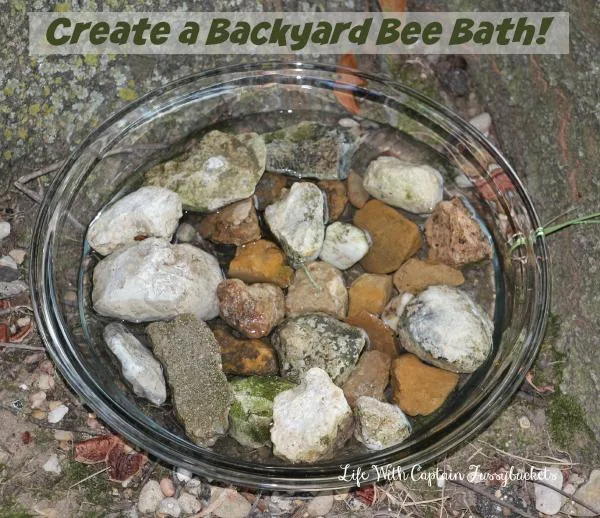Bees are very misunderstood creatures. It seems like they are known for stinging and causing pain above anything else. But did you know that bees are disappearing at alarming rates and our food supply DEPENDS on bees? We need to keep pollinators around because they're oh so helpful. Here is why it's important to create a sanctuary for bees in your backyard.

Why are bees so good, anyway?
Bees, along with other pollinators, are essential for TWO-THIRDS of the food crops that humans eat every day, such as almonds, squash, cucumbers, apples, oranges, blueberries and peaches. Without pollination, these plants just won't produce - plain and simple. Honeybees are responsible for approximately one out of every three bites of food that we eat! If you're still skeptical...listen to this: bees contribute to over $20 billion to the U.S. economy and $217 to the global economy!
Beekeepers have lost an average of 30% of their hives in recent years, with some beekeepers losing everything and being forced to leave the industry. Why is this happening, you ask? Neonic pesticides - one of the most widely used class of insecticides in the world, have been proven to be a key factor of bee die offs. Neonics can kill bees or make them more vulnerable to pests, pathogens, and other stressors while impairing their foraging and feeding abilities, reproduction, and memory. Neonics are widely used in the U.S. on 140 crops and for cosmetic use in gardens. They can last in soil, water, and the environment for months and years to come. They are also harming other helpful insects and animals like wild bees, butterflies, dragoflies, lacewings, and ladybugs, birds, earthworms, mammals, and aquatic insects.

About Neonic Pesticides:
- Bees are dying at alarming rates, and the use of neonic pesticides are a key contributor to the problem.
- Neonics are toxic to bees, long-lived, and systemic - meaning they move through the plant and are in pollen - plus they widely used both in agriculture and around the home.
- A study by Friends of the Earth and Pesticide Research Institute found 36 out of 71 “bee friendly” garden plants – 51% -- contained neonic pesticides that are harmful to bees, with no warning to gardeners.
- People should be using organic products or at the very least, make sure they are using non-neonic products.
- Neonics can kill bees outright and make them more vulnerable to pests, pathogens and other stressors while impair their foraging and feeding abilities, reproduction and memory.
- Neonics are widely used in the U.S. on 140 crops and for cosmetic use in gardens.
- Neonics can last in soil, water and the environment for months to years to come.
- Neonics are also harming other helpful insects and animals critical to sustainable food production andhealthy ecosystems, like wild bees, butterflies, dragonflies, lacewings, and ladybugs, birds, earthworms, mammals and aquatic insects.
- We need to change the law to restrict neonics, just as Europe and Ontario, Canada have done.

So....what can I do?
If the problem is so widespread, is there anything that we can do? The answer is yes! Friends of the Earth has made it easy for us to do our part and to create a sanctuary for bees in our own backyard. Friends of the Earth U.S. will offer “bee kits” and “bee’n’bee” houses. The kits will contain organic sunflower seeds and resources, a bee-safe and pesticide-free zone aluminum yard sign and other informational materials. The “bee’n’bee” kits will include a mason bee (non-stinging super pollinators) house and resources to maintain the house and create pollinator friendly habitat. Both kits will include resources that will allow people to get more involved with Friends of the Earth and its BeeAction campaign. The goal is that after taking action in their own backyards through the “bee map” and kits, folks will use it to connect and stay engaged with Friends of the Earth and the campaign on marketplace and local, state and federal organizing around protecting bees and other essential pollinators.
Create a Backyard Bee Bath

Another fun family project is to make a bee bath to provide a safe haven for pollinator bees.
Materials needed:
- shallow dish
- pebbles, stones, or wine corks
- fresh water
Directions:
- Add pebbles, stones, or wine corks to your dish.
- Place near your garden and/or bee house.
- Fill with fresh water, about halfway covering your stones.
- Keep your bee bath clean and filled with water, so bees will always have a place to go!
Get your own bee house to welcome bees to your backyard!

Judy Hallin
Friday 9th of June 2023
I am just starting to try to save the bees in my area. We basically had none last year, none of my zucchini grew because there was no pollinators and I didn’t realize that’s what it was so I have purchased a Bee house and I’m going to put it up as soon as it gets here and then I will add a bath. Thank you for the information
Diana Rambles
Tuesday 11th of August 2015
This bee house is very cool. I've been working very hard to put in pollinator friendly plants. I was so thrilled to see Monarch caterpillars on my milkweed, but then some birds ate them. :(
Gena
Thursday 13th of August 2015
Oh that's so sad!! Sometimes I'm not a bird fan at all!